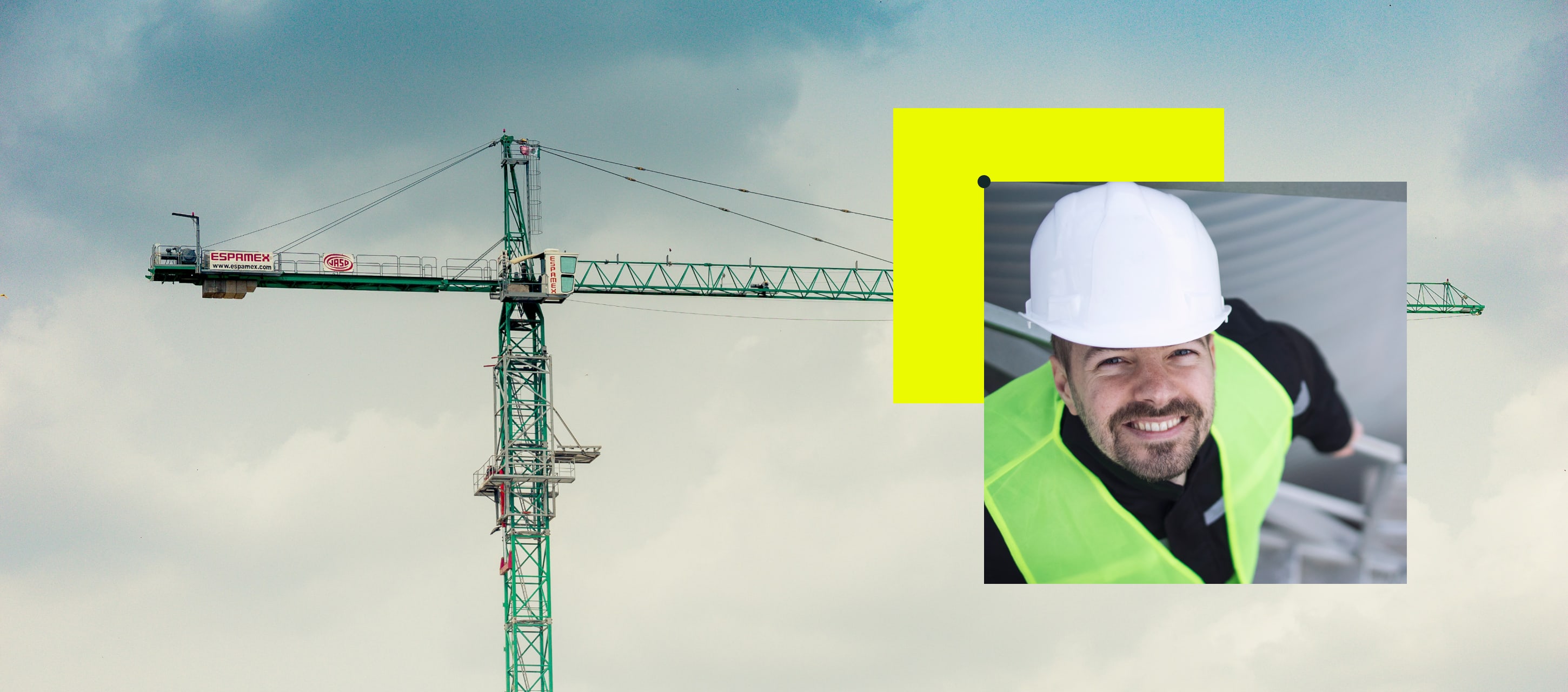Over half of infrastructure projects don’t meet their time, quality, and budget goals. And a root cause is often a lack of construction collaboration.
The good news here is that well-chosen strategies and tools can help. And below, we’ll learn the true meaning of collaborative construction and how to put it into practice.
Contents:
What Is Construction Collaboration?
Construction collaboration happens when everyone involved in a project is on the same page, fully understanding the ultimate goal and working harmoniously to achieve it. It’s not just about getting the job done; it’s about doing it together, efficiently and effectively.
When collaboration thrives, even crews from different departments and contractors work like a well-tuned orchestra. Everyone knows their part, and as a result, construction management becomes much easier.
You may think that collaboration equals communication (that is talking and discussing), but the concept is much wider and includes different elements:
- Regular updates, clear instructions, and open channels for feedback
- Shared goals and objectives
- Centralized, accessible documentation
- Defined roles and responsibilities
- Addressing challenges as they arise
- Using the right tools
Why Collaborative Construction Matters
According to a study by McKinsey, 98% of large construction projects incur cost overruns of more than 30%, and 77% are at least 40%. Effective collaboration could drastically reduce these figures and bring other benefits.
Staying on Budget
Imagine this: workers accidentally complete the wrong task because of poor communication, or worse, two teams unknowingly work on the same thing.
Rework becomes inevitable, costs rise, construction budget suffers, and tempers flare. In a situation like this, your site can quickly become a battleground of blame, leading to even more errors and delays.
Completing Projects on Time
A lack of collaboration almost always leads to delays. One of the biggest time-wasters? When a crew or contractor doesn’t have clear instructions or is left waiting for approvals. It’s like trying to bake a cake without knowing if the oven’s ready – frustrating and fruitless.
Boosting Productivity and Efficiency
What if you could do better than just finishing on time and within budget? That’s the power of construction collaboration. By continually working together, your team finds ways to work smarter, not harder. You start seeing more results with less effort – what could be better for your productivity in construction?
Fostering Innovation
To innovate is to collaborate. When diverse stakeholders share ideas, creative solutions emerge that no one person could have thought of alone. As they say, “Two heads are better than one,” and in construction project data, that means better designs, smoother workflows, and fewer headaches.
Reducing Risks
Collaboration isn’t just about getting the job done; it’s about doing it safely. When everyone’s working together, potential hazards are spotted sooner, and quick responses from supervisors eliminate construction risks and prevent accidents before they happen.
This table will give you a better idea of how effective collaboration positively impacts key construction metrics.
| Metric | Without Effective Collaboration | With Effective Collaboration |
|---|---|---|
| Project Completion Time | Frequent delays due to miscommunication and misaligned goals | Projects more likely to be completed on or ahead of schedule |
| Budget Adherence | High risk of cost overruns due to rework and inefficiencies | Improved cost control and reduced rework, keeping budgets intact |
| Worksite Safety | Increased accidents due to lack of coordination and communication | Enhanced safety with timely hazard identification and clear safety protocols |
| Team Productivity | Lower productivity with duplicated efforts and unclear instructions | Higher productivity through streamlined workflows and clear roles |
| Problem Solving | Stagnant approaches with little collaboration between departments | Enhanced innovation and quicker problem resolution through shared ideas and teamwork |
Main Challenges to Construction Teamwork
Identifying and tackling these typical challenges can help you bring harmony to your project.
Misaligned Goals
Construction sites can easily become competitive arenas where subcontractors fight for a larger slice of the budget and calendar.
But when each team member focuses on their own goals rather than the project’s overall objective, communication breaks down, leading to mistakes and missed opportunities.
Miscommunication or Lack of Coordination
Poor communication is the breeding ground for poor results. Delays often occur because someone misunderstood instructions or the timeline.
Imagine one crew waiting on another to finish a task, only to find out they weren’t even supposed to be there yet. It’s like a comedy of errors, but without the laughs.
Disorganized or Inaccessible Documentation
Even with digitized documents, things can still go awry. Long email chains become confusing, conflicting versions of plans emerge, and before you know it, your project is derailed.
When documentation is scattered across platforms, or permissions aren’t clear, both the construction collaboration and quality of your work suffer.
Resistance from Teammates
No one likes change, but sticking to old ways in a rapidly evolving industry can be costly. You might encounter resistance when adopting new collaboration tools, but remember: To improve is to change.
With the right support and training, even the most hesitant team members can embrace new, more efficient ways to collaborate on construction projects productively.
Read More Read More Best 5 construction daily report tools for site managers in 2024
Top Tips for Improving Construction Jobsite Collaboration
Want to turn collaboration challenges into successes? Here are some practical tips to get you there:
Start Collaboration Early
Begin your collaboration efforts during the planning phase. Set up construction processes with all key stakeholders – architects, clients, project managers, contractors, and subcontractors. It’s crucial to give everyone a voice from the start.
Use this opportunity to introduce tools like Fluix, Raken, Procore, or FieldChat which streamline document sharing and workflow management. When everyone knows how to use these tools, collaboration becomes second nature.
Hold Regular Meetings
Regular meetings, like toolbox talks, are essential for keeping everyone on track. Use these sessions not only to update the team but also to get their feedback.
Ask yourself: How can we improve collaboration? What’s working, and what isn’t? These discussions help you fine-tune your approach and keep the team engaged.
Implement Communication Best Practices
When everyone knows how to communicate effectively, collaboration becomes much easier. Ways of achieving that include:
- Promoting transparency and honest feedback
- Defining and monitoring metrics that help you quantify the quality of your collaboration
- Keeping data in a single industry-specific documentation platform instead of separate email threads or a general cloud storage system
- Setting up clear communication channels
- Finding ways to show appreciation for or even incentivize those who practice collaborative construction
Importantly, make sure your leadership creates a culture of construction collaboration by setting a good example.
Adopt Construction Collaboration Technology and Tools
The right tools can make or break your collaboration efforts. By choosing cloud-based construction field collaboration software like Fluix you can centralize all your documentation and communication.
Imagine having a single, secure platform where every stakeholder – from project managers to subcontractors – can access real-time updates, share critical documents, and track project progress.
By integrating with popular apps like Slack or connecting custom software through platforms like Automate.io, you ensure that everyone stays connected and informed.
Asana and Trello are project management tools that can help construction teams organize tasks visually, track progress, and facilitate clear communication across the team.
And BIM 360 by Autodesk connects all project stakeholders in a single cloud environment, enhancing issue resolution during the design and construction phases.
Remember, successful projects aren’t just about hard work – they’re about working together. With the right collaboration strategies and tools, you can turn any construction project into a well-oiled machine.






